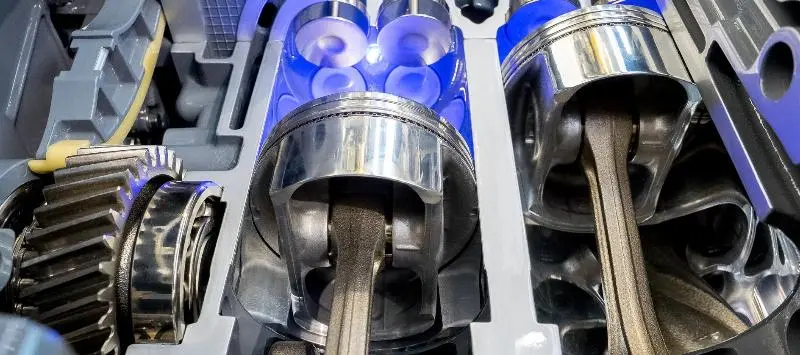
Engine piston - what is it and what is it for
Content
Modern internal combustion engines have a complex structure compared to analogues made at the dawn of the automotive industry. This is due to the fact that to ensure stability, efficiency and effectiveness, manufacturers install additional electronic systems on the power unit.
Despite the subtlety of electrical systems, the ICE device has not changed much. The main elements of the unit are:
- Crank mechanism;
- Cylinder piston group;
- Intake and exhaust manifold;
- Gas distribution mechanism;
- Engine lubrication system.
Mechanisms such as crank and gas distribution should be synchronized. This is achieved thanks to the drive. It can be belt or chain.
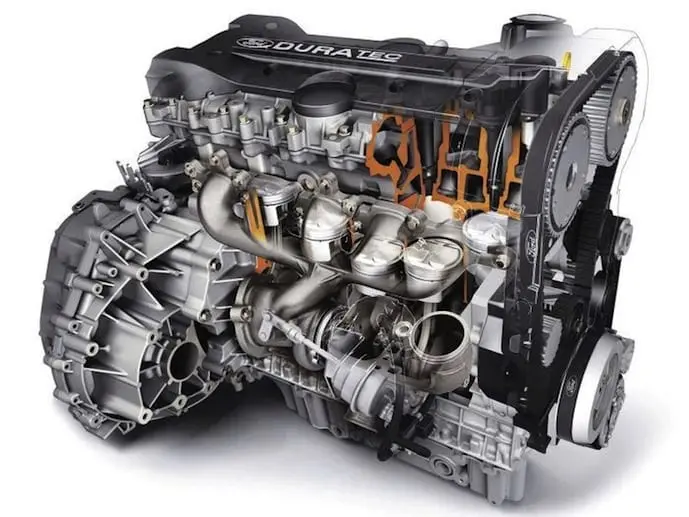
Each engine assembly performs an important function, without which stable operation (or even operability) of the power unit is impossible. Consider what function the piston performs in the motor, as well as its device.
What is an engine piston?
This part is installed in all internal combustion engines. Without it, it is impossible to ensure the rotation of the crankshaft. Regardless of the modification of the unit (two- or four-stroke), the piston operation is unchanged.
This cylindrical part is attached to the connecting rod, which, in turn, is fixed on the crankshaft crank. It allows you to convert energy released as a result of combustion.
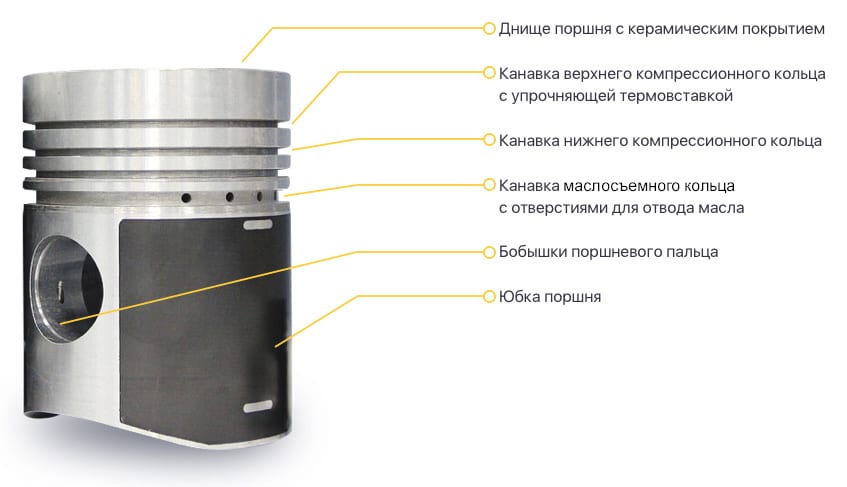
The space above the piston is called the working chamber. It takes all the clocks of the car engine (an example of a four-stroke modification):
- The inlet valve opens and air mixed with fuel (in atmospheric carburetor models) or air itself is sucked in (for example, air is sucked in a diesel engine, and fuel is supplied to the desired degree after volume compression);
- When the piston moves up, all the valves are closed, the mixture has nowhere to go, it contracts;
- At the highest point (also called dead), a spark is supplied to the compressed air-fuel mixture. A sharp release of energy is formed in the cavity (the mixture ignites), due to which there is an expansion that moves the piston down;
- As soon as it reaches the lowest point, the exhaust valve opens and exhaust gases are removed through the exhaust manifold.
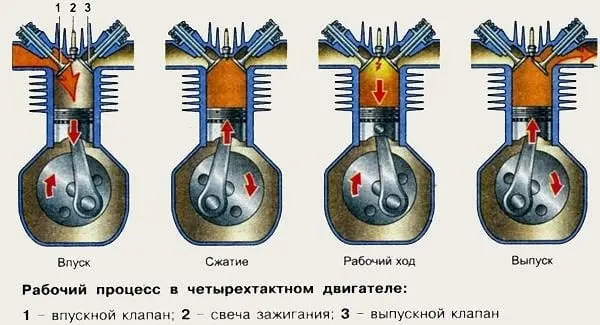
Identical cycles are performed by all elements of the piston group of the engine, only with a certain offset, which ensures smooth rotation of the crankshaft.
Due to the tightness between the walls of the cylinder and the piston o-rings, pressure is created, due to which this element moves to the bottom dead point. As the piston of the adjacent cylinder continues to rotate the crankshaft, the first moves in the cylinder to top dead center. So there is a reciprocating motion.
Piston design
Some under the piston mean a combination of parts that are mounted on the crankshaft. In fact, this is an element with a cylindrical shape, which takes on mechanical stress during microexplosion of a mixture of fuel and air at the end of a compression stroke.
The piston device includes:
- bottom;
- grooves for o-rings;
- skirt.
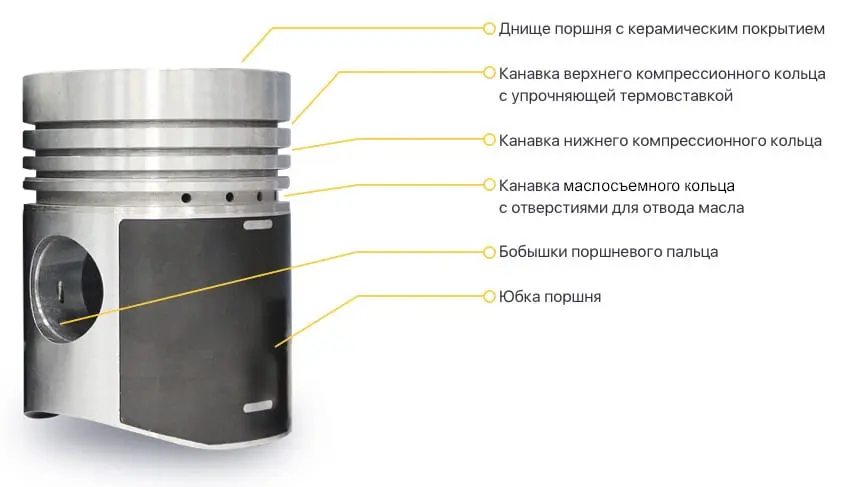
The piston is attached to the connecting rod with a steel pin. Each element has its own function.
Bottom
This part of the part takes on mechanical and thermal stress. It is the lower boundary of the working chamber, in which all of the above measures occur. The bottom is not always flat. Its shape depends on the model of motor in which it is installed.
Sealing part
In this part, oil scraper and compression rings are installed. They provide maximum tightness between the cylinder block of the cylinder, due to which, over time, not the main elements of the engine wear out, but interchangeable rings.
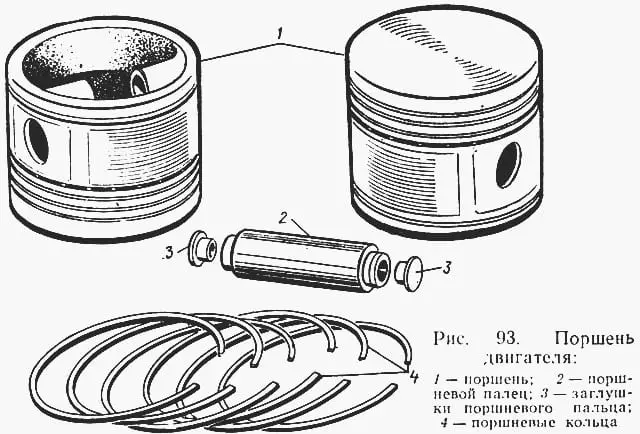
The most common modification is for three o-rings: two compression rings and one oil scraper. The latter regulates the lubrication of the cylinder walls. The combination of the bottom and the sealing part is often called mechanics by the piston head.
Skirt
This part of the part provides a stable upright position. The walls of the skirt direct the piston and prevent it from turning over, due to which the mechanical load would not be distributed evenly along the walls of the cylinder.
The main functions of the piston
The main function of the piston is to set the crankshaft in motion by pushing the connecting rod. This action occurs when the mixture of fuel and air is ignited. The flat surface of the bottom takes on all the mechanical stress.
In addition to this function, this part has some more properties:
- It seals the working chamber in the cylinder, due to which the explosion efficiency has a maximum percentage (this parameter depends on the degree of compression and the amount of compression). If the o-rings are worn, the tightness suffers, and at the same time, the performance of the power unit decreases;

- Cools the cooking chamber. This function deserves a separate article, but in short, when ignited inside the cylinder, the temperature rises sharply to 2 thousand degrees. To ensure that the part does not melt from it, it is extremely important to remove heat. This function is performed by the seal rings, the piston pin together with the connecting rod. But the main heat-removing elements are oil and a fresh portion of the air-fuel mixture.
Piston types
To date, manufacturers have developed a large number of different modifications of the pistons. The main task in this case is to achieve a “middle ground” between reducing wear on parts, unit performance and adequate cooling of the contact elements.
To better cool the piston, a larger number of wide rings are required. But with this, the efficiency of the motor decreases, since part of the energy will go to overcome more friction.
By design, all pistons are divided into two modifications:
- For two stroke engines. The bottom in them has a spherical shape, which improves the removal of combustion products and the filling of the working chamber.

- For four stroke engines. In such modifications, the bottom will be concave or flat. The first category is safer when shifting the valve timing - even with the valve open, the piston will not collide with it, since it has corresponding recesses. Also, these elements provide better mixing of the mixture in the working chamber.
Pistons for diesel engines - a separate category of parts. Firstly, they are much stronger than analogues for gasoline ICEs. This is necessary because pressure must be created inside the cylinder in excess of 20 atmospheres. Due to high temperatures and tremendous pressure, a conventional piston will easily collapse.
Secondly, such pistons often have special recesses called piston combustion chambers. At the intake stroke, they create turbulence, providing improved cooling of the hot bottom, as well as more efficient mixing of fuel with air.
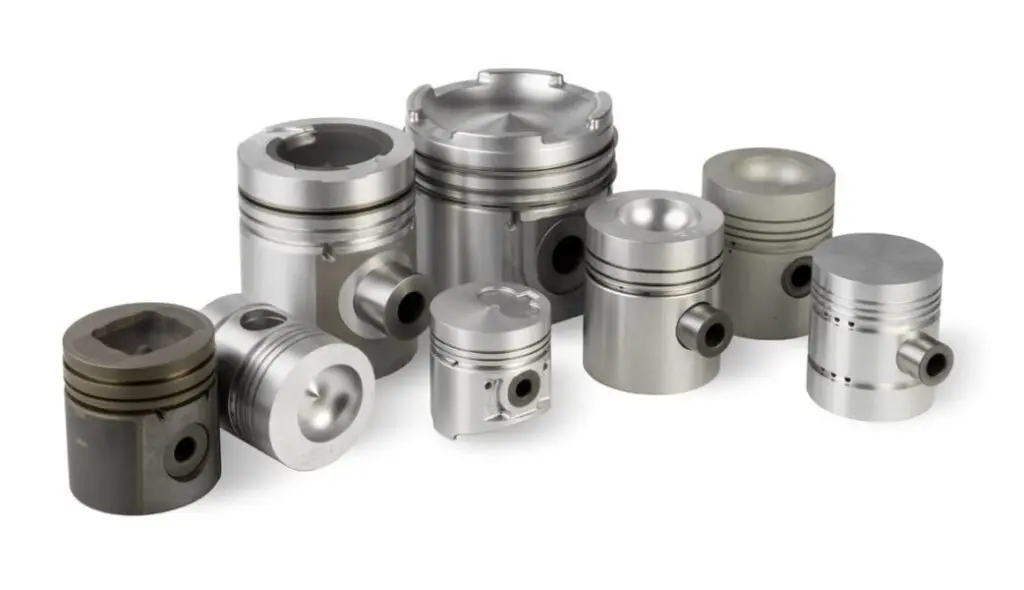
There is also another classification of these elements:
- Cast. They are made by casting in a continuous blank, which is then processed on lathes. Such models are used in passenger vehicles;
- National teams. These parts are assembled from different parts, which makes it possible to combine materials for individual piston elements (for example, the skirt can be made of aluminum alloy, and the bottom can be made of cast iron or steel). Due to the high cost and design complexity, such pistons are not installed in conventional motors. The main application of this modification is large internal combustion engines running on diesel fuel.
Engine piston requirements
In order for the piston to cope with its task, the following requirements must be met during its manufacture:
- It must withstand high temperature loads, while not being deformed under mechanical stress, and so that the efficiency of the motor does not fall with a change in temperature, the material should not have a high expansion coefficient;
- The material from which the part is made must not wear out quickly as a result of the function of a plain bearing;
- The piston should be light, because with an increase in mass as a result of inertia, the load on the connecting rod and crank increases several times.
When choosing a new piston, it is extremely important to take into account the recommendations of the manufacturer, otherwise the engine will experience additional loads or even lose stability.
Questions and answers:
What do pistons do in an engine? In the cylinders, they perform reciprocating movements due to the combustion of the air-fuel mixture and the impact on the crank from adjacent pistons moving downward.
What kind of pistons are there? With symmetrical and asymmetrical skirts with different bottom thicknesses. There are pistons of controlled expansion, auto thermal, autotermatic, duoterm, with baffles, with a beveled skirt, Evotec, forged aluminum.
What are the design features of the piston? Pistons differ not only in shape, but also in the number of slots for installing O-rings. The piston skirt can be tapered or barrel-shaped.
